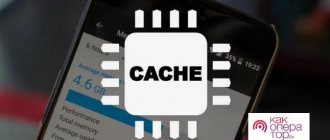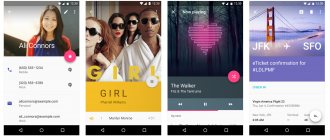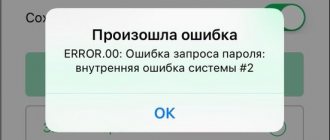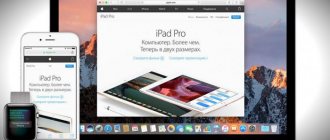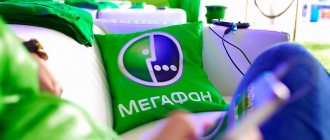A little less than two years ago, in November 2007, under the leadership of Google
The Open Handset Alliance
(
OHA
business alliance was organized , which included the largest mobile phone manufacturers and software developers:
HTC
,
Intel
,
Motorola
,
Samsung
and about 30 smaller companies. Now their total number has already reached 48, and by the end of the year it may grow to 53.
Simultaneously with its founding, OHA announced the development of the open Android
, and a week later he provided the developers with the first version of the SDK. From that moment on, a completely new stage began in the life of Google and a new round of development of the pocket computer market.
Open means accessible
| Writing programs for Android is surprisingly simple: the programming language is standard C#, the operating system emulation is excellent, and programs can be easily assembled from the “cubes” included in the standard SDK. |
Android is an operating system for mobile phones and communicators. It differs from its competitors primarily in its openness: the project’s source codes are available for download on the website www.source.android.com
.
This means that any programmer who wants to write a full-fledged application for an Android phone can easily do this without paying anyone a penny and without breaking any laws. And the situation will definitely not change: the OS is distributed under the open GNU
, which prohibits any closure of the source code.
An important point of Android ideology is complete equality of applications. There is nothing here that cannot be painlessly removed from the system. Any application, from a phone book to a browser, can be replaced with an analogue at any time - and it doesn’t matter at all whether this analogue was installed in the system initially, written by a third-party developer, or by your neighbor down the street. Moreover, any user has full access to all the functionality underlying the operating system. The application architecture is specially built so that you can take building blocks out of utilities and write something new based on them. After all, finally, on a mobile phone you can not just change the screensaver or change the color scheme, but completely redesign the software to suit your needs.
| The first photos of the Google Phone, which appeared on the Internet in the summer of 2008, caused a lot of noise. But the first Android-based device was released only at the end of the year. |
Another feature is Internet orientation. Most programs written for Android use the Internet in one way or another: they download information from there, store data there, access new libraries there, and so on. And the programs themselves are also taken from the Internet - they cannot be bought in a store in a box, but they can be downloaded or purchased in the Android Market online store, which opened at the end of October 2008. This store is very similar to the AppStore
- a similar interface, the same principle of operation, the same methods for checking utilities before sale. Today, the Google store already has more than 2,500 Android applications in 16 global categories - but, unlike the same AppStore, most of these applications are free. This is not surprising: it’s easy to write for the system and anyone can put their utility on the “market”. True, the program you write must be tested by developers.
The distribution scheme for paid Android Market applications also deserves special attention. The fact is that each paid program has not only a developer, but also a “sponsor” - a mobile operator that ordered this very program and paid the cost of its development. So, when you buy an application in an online store, 70% of the royalties from the sale of the application go to the developer, 30% to the cellular operator. AppStore, selling applications for iPhone
and
iPod Touch
, maintains exactly the same level of royalties, with only one small difference: 30% goes “into Apple’s pocket” to support the store.
Google receives absolutely nothing from app sales.
The inner world of robots
| HTC Hero is the first Android smartphone that will be officially sold in Russia. The model is quite specific, but it will find its audience. |
The developers chose the Linux kernel as the technical basis for Android. It was decided to abandon the use of the Java virtual machine due to compatibility problems (applications created, for example, for Samsung, in many cases do not work under Sony Ericsson or Nokia). Java created too many problems: porting a popular program to each of the hundreds of phone models took months of work that could have been better spent. Therefore, in Android, Java was replaced by another virtual machine - Dalvik. It weighs much less, consumes relatively few resources and, most importantly, is supported by all phones without exception. Therefore, any Android application can be run on any device running it. At least in theory.
The operating system itself is also highly scalable: again, in theory it can run on any mobile device that has a GSM module and a touch screen. Processor frequency, amount of memory and other characteristics are of secondary importance: of course, you should not expect the same performance from a weak mobile phone and a powerful communicator - but, nevertheless, really any device can be made based on Android. So far, however, all manufacturers of Android phones work only for the business segment, developing multifunctional, powerful and quite expensive devices, but at the beginning of next year the situation should change, the first budget Android phones will appear on the market.
Types of firmware
In addition to the pure system from Google, there are a number of enthusiasts developing their own firmware, which have their own functionality and capabilities. You will see a completely different design; it happens that the firmware of another manufacturer will work better than pure Android.
At the moment, there are companies that create firmware for smartphones and other devices: CyanogenMod, which is now LineageOS, AOKP, MIUI, Paranoid Android, AOSP, Replicant and others.
Enthusiastic developers try to release firmware versions on time, together with the release of a clean OS. But sometimes there is no need to flash the phone, since the manufacturers could take care of it.
Do androids dream about electric apples?
| Meet the Mobile G1, aka HTC Dream. The first Google phone on the planet. |
Having barely appeared on the market, Android managed to take its rightful place among mobile operating systems. Symbian
it outperformed at the start, showing much greater scalability of the system, ease of downloading applications and the absence of problems with licenses.
Windows Mobile
with , but Android still had something to contrast with the old system: the open source system, many free applications, the “lightness” of the operating system itself and a much more reasonable mechanism for working with touch screens.
The most difficult situation is with iPhone OS
— these two operating systems have too much in common.
Moreover, the announcement of the Android platform itself took place just four months after the first Apple iPhone
, which instantly gained popularity among consumers. It is not surprising that serious debate has flared up in online communities about whether the Google Phone can seriously compete with the iPhone.
Today the question still remains open. On the one hand, Android has one undeniable advantage: versatility. The fact is that not all iPhone applications can run in the background. As soon as you press the middle button, the programs close or go into standby mode: the browser stops loading pages, the ICQ client only works to receive messages, games and downloaded applications are unloaded, and only the player and phone continue to work as if nothing had happened. Android allows you to put anything into the background - browsers, games, text editors, and instant messengers. If only there was enough RAM on the device.
| Android allows you to change not only screensavers and sounds, but also completely customize the device for yourself, adding the necessary programs. | HTC, as always, have developed their own touch interface for their smartphone. But if you don’t like it, you can always download any other one from the Android Market. |
If we add to this advantage the lack of binding of the operating system to a specific program on the computer (Android does not have such a strong connection with programs as the iPhone does with iTunes) and excellent work with multitouch, Android turns out to be a rather strong competitor to the iPhone OS, capable of defeating this operating system. system in any competition... But not everything is so simple - Android, like any mobile platform, is dependent on the device on which it runs. And if the iPhone is an already completed and well-promoted product, the Android systems market is still in its infancy.
Android logo
The now familiar Android logo, which looks like a cross between a robot and a green beetle, was created by Irina Blok when she worked at Google. Block said the only direction Google's design team gave her was to make the logo look like a robot. She also stated that the final design of the Android logo was partly inspired by signs with pictures of men and women on toilet doors.
Block and Google decided to make not only the Android operating system itself, but also its logo an open source project. Any other company would protect such a logo from alteration and use by third parties. However, the Android robot, thanks to Google's decision, has been modified many times and used by many people. The Android mascot, also known as "Andy", was changed along with most of the Android branding. He may have lost his body, but his new appearance is being used much more often.
Wasn't it there?
| The RK2808 chipset should become the main competitor to ARM processors, which are currently used in smartphones such as the iPhone and Pre. |
The main problem with Android devices at the moment is their experimental nature. Phone manufacturers do not have a very good idea of the market in which to sell this operating system, and rush from one extreme to another - either offering frankly crude, cheap handicrafts, or suddenly aiming at designer smartphones for businessmen that cost fabulous money. For example, an iPhone 3GS (16 GB) without a contract with a mobile operator will cost the buyer $600 (approximately 19,000 rubles), while the HTC Hero
, equipped with only a 2 GB memory card, costs $100 more without a contract. Within the price category, the difference seems to be small, but it nevertheless becomes a very powerful argument for the buyer in favor of a device from Apple. As a result, such experimental devices are bought by only a few - those who know exactly what Android is and why they need it.
Fortunately, the situation is gradually leveling out: components are becoming cheaper, older models are being sold, and very soon we will see quite affordable Android devices on the Russian market. For example, the Taiwanese corporation High Tech Computer
(HTC) will soon launch the budget smartphone
HTC Click
(its expected price is $280-320), and the Chinese company
Rockchip
, which produces chips for portable media players, is preparing to introduce a new inexpensive chipset
RK2808
, equipped with Android support - this development, as experts expect , will further reduce device prices.
Navigators
One of the first companies to introduce the Android operating system into satellite navigators was the Russian TeXet. Until 2011, GPS navigators used a modification of the operating system from Microsoft - Windows CE. As it turned out, installing the Android OS allows you to create a more functional navigator. For example, a navigation gadget on Android supports OpenGL 3G technology, thanks to which it is possible to achieve a beautiful and realistic 3D picture on the screen.
Chinese turtle
| Fun fact: the history of intelligent machines in the Ghost in the Shell universe began with an operating system called Android... |
There is an opinion on the Internet about the imperfection of the Android system, its “crude” status and weak competitiveness (in particular, compared to the iPhone). There is undoubtedly some truth in this, but I would like to remind you of the difference in the approaches of Apple and Google to the development of their platforms. The Apple iPhone appeared on the market in 2005 and over the past three years has already changed three generations of devices and experienced three major updates that actually redesigned its operating system. And, for example, the Google Mail
, having been the best web email interface for the past 5 years, only came out of beta status in 2007. Thus, Google makes it possible to track versions and changes in real time, while Apple keeps developments in “closed workshops” until the very end in order to run and test everything possible - and immediately release a commercially independent product. It's hard to argue which of the two approaches is better; only time will tell. “We’re like a Chinese sea turtle,” Andy Rubin, Google’s head of mobile, once told reporters. “We are climbing the mountain for a long time, but in the process of evolution our devices only become more perfect, while most of our competitors simply die out.”
| The main competitor of the Google Phone is undoubtedly the iPhone. So far, Apple is winning both in terms of brand and price, but how long will Apple be able to maintain its leading position? | Acceptance of the GNU license automatically puts Android in the public domain. Even if Google really wants to, the code of this OS will never be closed. |
Additional features
Many people know that each modification of the system has a key name, usually some kind of dessert. For example, Cupcake, which means cupcake. One of the popular versions 4.1-4.3 is called Jelly Bean. But version 4.4 is named after the famous KitKat chocolate bar. The next modification 5.0 and 5.1 is called Lollipop - lollipop. The sixth option is Marshmallow and, finally, the latest version at the moment, 7.0-7.1.2, received the Nougat code.
There is just a little time left before the release of version 8, or as it is called Android O. The beta version of the operating system is already installed on some flagships and works stably. The entire OS will be released at the end of 2021. And yes, the keyword will most likely be Oreo. Below you will see a video of the presentation of the eighth version.
Well guys, I finished the article, now you know what Android is, where it is used, its features. In future articles I will tell you almost everything related to this operating system. Well, I wish you good luck!
This is interesting: What to choose a smartphone or tablet
* * *
Google definitely does not plan to stop developing: at the end of July this year, a development version of the Android 2.0 software platform was released, codenamed Donut
. So far, Donut is unstable and is only suitable for review, but it can give an idea of the new features that we will be able to see in the final release. Almost every element of the system has changed and improved, but the main emphasis in Donut is on search capabilities. For example, it became possible to simultaneously search for information in the device’s memory and on the Internet. And you can use handwriting to navigate through your contacts list and media library.
In addition, the second version of Android introduced support for multitouch technology at the system level (until now it only worked in certain applications), a function for voice playback of text, automatic backup and a new camera application. It is expected that support for CDMA networks will be implemented, and, what is especially pleasant, performance will increase. By the way, despite the fact that Android 2.0 is not yet ready for full launch, the Swedish-Japanese concern Sony Ericsson has already announced its intention to release communicators based on Donut.
